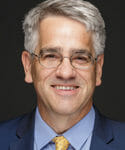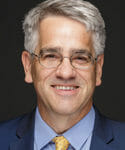Are we there yet?

THE INDY OUTLOOK
By Elliott Parker, Ph.D.
Is Nevada’s economic growth picking up? Reading the newspaper and listening to the Chamber of Commerce might give one the impression that things are humming, but the numbers tell a more nuanced story of slow recovery and lingering weaknesses.
Our economy grew at a 5.2 percent annualized rate in the third quarter of 2016, one of the fastest rates in the country. But before we get too excited by one good quarter, we should not forget that it grew at a 0.3 percent average rate over the three quarters prior, and at a 0.8 percent average in the six years since Governor Sandoval first took office. Meanwhile, our population has grown by an annual average rate of 1.4 percent over the last six years, so our output per capita is still 3 percent lower than it was in 2010, and 18 percent below where it was in 2007, before the Great Recession began.
What about jobs? While we added about 40 thousand people per year to Nevada’s population since 2010, we also added about 30 thousand jobs per year, enabling us to finally catch back up in 2014 to our pre-recession levels, and bring our unemployment rate down to 5.1 percent. Job growth has since slowed, however, and we added fewer than 20 thousand jobs in 2016. The areas of the economy that have shown the most growth in both output and employment have been construction and warehousing, which suggests less diversification than we might have hoped.
Meanwhile, the average Nevadan continues to struggle. Median real household income rose in 2015 for Nevada by 4 percent, but this one good year came after years of stagnant wages, and incomes are still 16 percent below 2007 levels, and 6.5 percent below 2010 levels.
There is optimism in the housing market. Real home prices dropped 65 percent between 2006 and 2011, but bargain hunters finally entered the market and prices rebounded strongly. Real prices are now back to 2003 levels, still a third below the peak of the bubble but considerably higher than the long-run average price. The Governor’s executive budget, which was released last month, also suggests optimism. After years of underinvesting in education and infrastructure, it appears that some state monies may be allocated to filling in the metaphorical potholes, and that more cuts are no longer being planned.
Looking forward, there are some opportunities and many concerns. On one hand, it is possible that Congress may decide to support the Trump administration if it proposes public investment in infrastructure. After years of neglect of our roads, bridges, and schools we certainly have the need for this. On the other hand, disruptions in international trade and travel could have a significant downside for Nevada since we still depend heavily on tourism.
The dismantlement of the Affordable Care Act could shift more Medicaid costs onto our state government, and significantly reduce the number of insured. Financial deregulation could set us up for another crisis. We have too little information now to know what will happen, but it is very difficult to translate the stock market’s current enthusiasm for tax cuts and deregulation into real benefits for the middle class.
And what about protecting against the next bust? The Great Recession exposed a lot of problems in Nevada, including a property tax base that did not grow along with the economy and a need to increase the quality of our public education system. Perhaps we may also start putting a meaningful amount of money back into the rainy day fund, since the best time for saving is during the boom, not the bust. There are indications that our legislators may finally address those problems, but one might be forgiven a little skepticism given the record of past legislatures.
This op-ed is one of three on the Nevada economy published on Sunday, Feb. 5, 2017. The columns are Part One of a series we're calling THE INDY OUTLOOK and that will be written by a trio of Nevada economists.
 Elliott Parker, Ph.D, the author of this op-ed, is a Professor of Economics in the College of Business at UNR and Associate Dean, Undergraduate Programs & Administration.
Elliott Parker, Ph.D, the author of this op-ed, is a Professor of Economics in the College of Business at UNR and Associate Dean, Undergraduate Programs & Administration.
Photo by Gina Dittmer.
